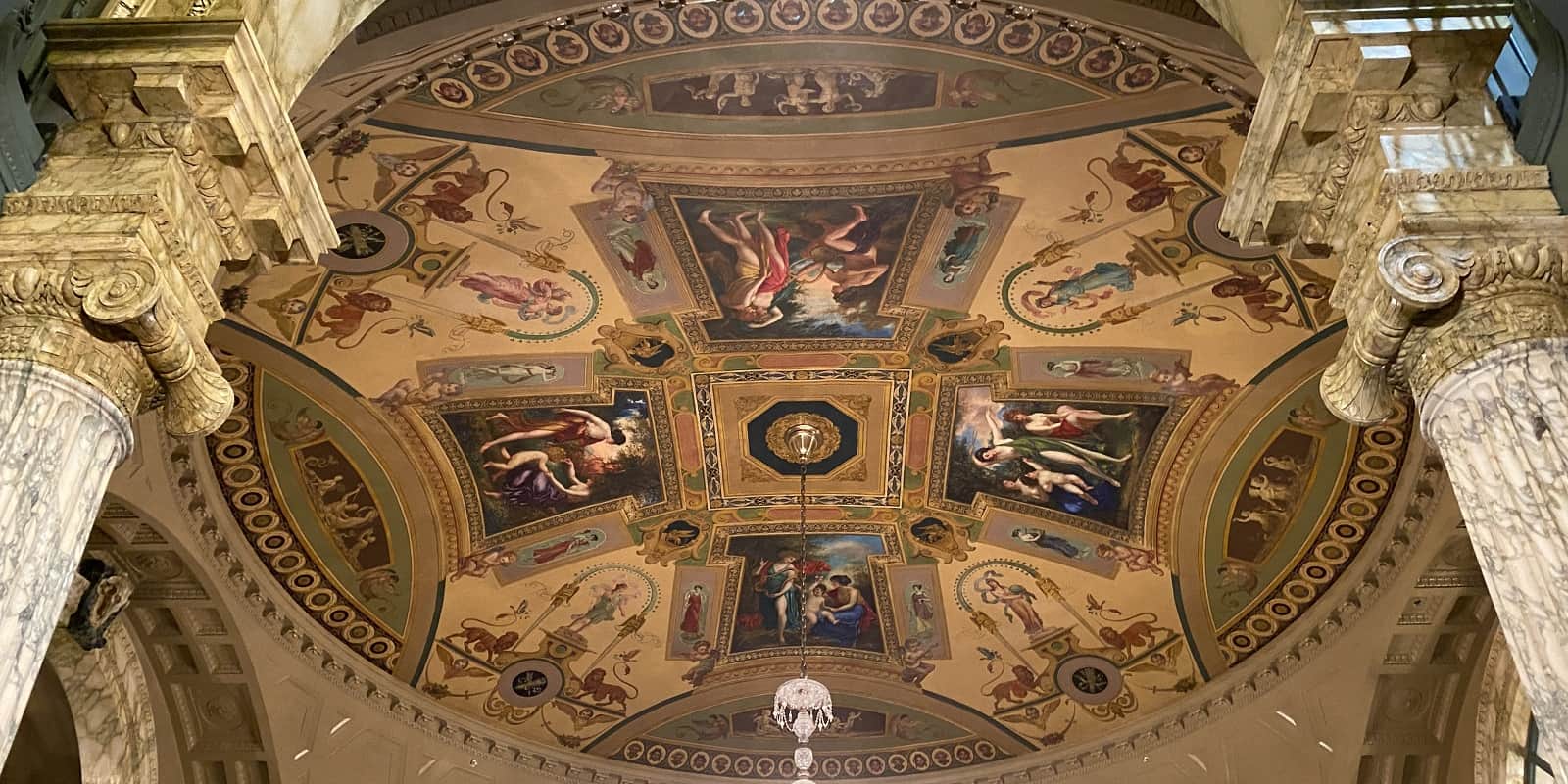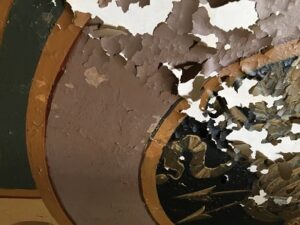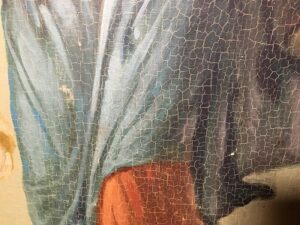

Art Condition Reports are a necessary component of the fine art restoration process. These write-ups are a culmination of research, both in the field and in the office, and the careful, exhaustive inspection and documentation of the existing state of the mural in question. In these reports, there are multiple key points that will be highlighted by the industry professional conducting the study. Archival research, detailed notation of the existing condition of the mural, and an interpretation section providing recommendations for next steps will all be outlined in the final report. Overall, these reports are done to document the exact conditions of the mural or art piece at the exact time of the investigation. It will serve as a foundation for any restoration or conservation efforts that may be done at the current time or in the future, and will provide a guide for the conservator when the time comes.
Before any work on the conditions documentation can begin, the mural, or building in which the mural is located (if it was painted onto a surface in that building), must be researched. Archival research is an important step in any condition assessment, as it provides background information and context for the mural. Knowing who the artist was, when the piece was painted, and the reason why the mural was painted can aid in determining an appropriate treatment recommendation. Though it depends on the conservator, the report will usually be broken down into sections for each mural being assessed. If there is only one mural, the report will only be for that one piece, but if there are multiple in need of restoration, the report will be lengthy in order to cover all art pieces. Each piece will be evaluated, with the condition of the work documented in a paragraph or two, providing an overview of the current state of the art piece. Conditions are often noted as good, fair, or poor, though this notation may vary based on the conservator.

Documented damage on the ceiling mural at the Grant County Courthouse in Elbow Lake, Minnesota.
To begin, the mural or art piece in need of restoration or conservation will be evaluated in its current state. A good condition report will include the size of the mural, a detailed description of exactly what is portrayed in the mural, and will note specific areas of damage, if any such areas exist. The medium in which the mural was painted and the material or substrate on which it was painted both need to be documented and evaluated for signs of wear as well. The fasteners and adhesives used to bond the base material to the frame or substrate must be investigated and documented, and any previous attempted interventions, such as overpainting or additional varnish layers, must be noted to ensure the report is the most comprehensive history of the art piece possible. Finally, layers of varnish, if present, that may be yellowing or darkening must be examined and documented in the final report.
Any signs of wear, damage, abrasions, paint delamination, lifting paint, water infiltration, efflorescence, dirt, or loss will be meticulously inspected and documented. This documentation is done in the form of written notes, photos, and sometimes sketches/drawings that map where each area of concern lies on the art piece. The cause of the failure, whether from moisture, improper storage, or other factors, must be determined before any further investigation is done. These root causes must be addressed as a part of the final treatment recommendation listed for each artwork, and should be listed as high priority to ensure that they are resolved before any conservation work is done to the art. These recommended treatments are listed for each individual piece based on the needs of the specific mural. Each mural may vary in the treatment plan, as each work may have different problems that need to be addressed depending on whether cleaning or stabilization is needed.



A painting can accumulate several different types of damage or wear, including flaking, craquelure, and abrasions, as all shown above. These conditions can vary in degree of severity, and may or may not be flagged to be addressed during a restoration by the conservator. The conservator writing the report must use their best judgement to determine whether the restoration or conservation of the mural in question is necessary or feasible based on the current state of the art. In some cases, light wear may not need to be addressed, as it either is not bad enough to be a concern, or the conservation of the art poses possible risks of further damage, so it is decided that the piece is better left alone than conserved. If the treatment plan requires cleaning and immediate work is to take place, the assessment might include cleaning tests and recommendations as well. As it is a standard practice with the Canning company, it should be planned that all conservation treatments to be performed and completed in accordance with the Code of Ethics and Guidelines for Practice as outlined by the American Institute for Conservation of Historic and Artistic Works (AIC) and the Secretary of the Interior’s Standards for the Treatment of Historic Properties.
Condition Reports are used as guides by industry professionals to determine what work a piece of art needs in order to conserve and preserve it. They also provide the owner of the artwork with an understanding of the current condition of their mural, and a treatment plan identifying the conservation work that it will be required to ensure that it will last for another lifetime. Canning specializes in providing well researched, thorough, and accurate art condition reports for historic murals and artwork. We would be happy to assist you with any art conditions reports for your historic murals or artwork pieces; simply request a consultation to connect with one of our knowledgeable consultants.